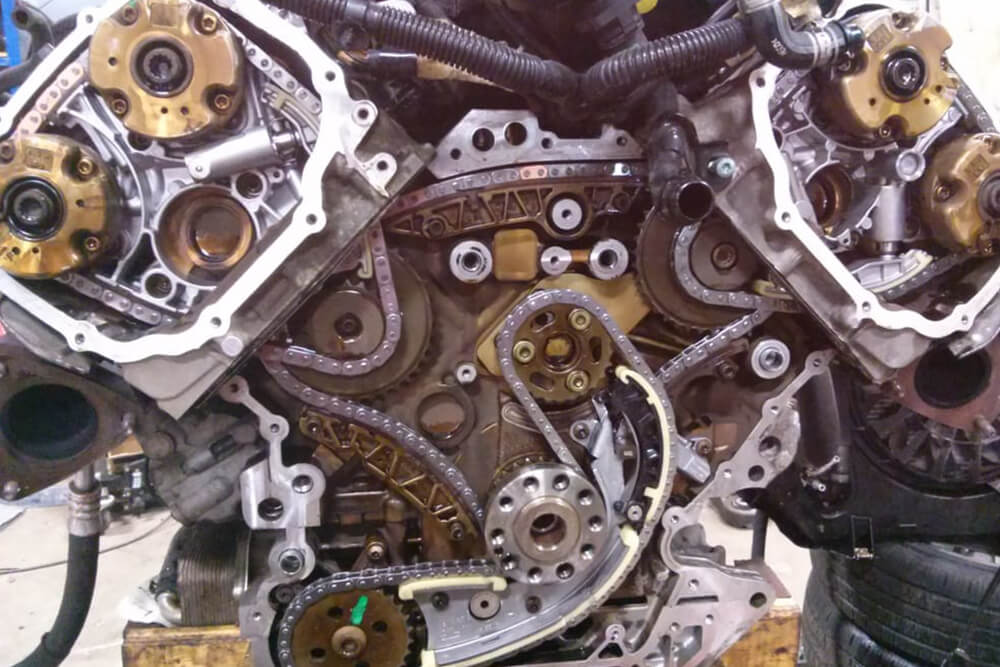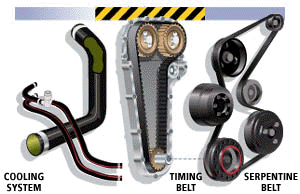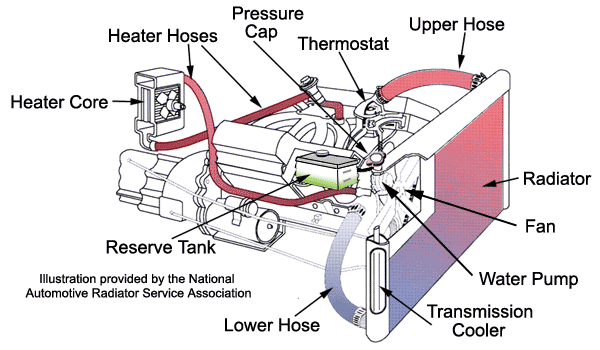 Exposure to heat, vibration and contamination makes belts and hoses wear out faster than any other components in your car. That’s why regular inspections are so important. Here are the belt and hose types in your car, along with their applications.
Exposure to heat, vibration and contamination makes belts and hoses wear out faster than any other components in your car. That’s why regular inspections are so important. Here are the belt and hose types in your car, along with their applications.
Accessory Drive Belts
 While some accessories in your car or truck are electrically powered by the charging system, others use the engine itself as their power source. The power for these accessories is delivered by a system of pulleys and belts. Examples of these accessories are:
While some accessories in your car or truck are electrically powered by the charging system, others use the engine itself as their power source. The power for these accessories is delivered by a system of pulleys and belts. Examples of these accessories are:
- lternator
- Water Pump for engine cooling
- Power Steering Pump
- Air Conditioning Compressor
- Radiator Cooling Fan
- Many late model cars use a single serpentine belt in place of individual belts to drive these accessories.
Hoses
The hoses that convey your car’s fluids are made of two rubber layers with a layer of fabric in between. Typical hoses include:
Radiator and Heater Hoses – These hoses convey coolant to the engine and heater core.
Fuel Hose – As the name implies, this hose transports gasoline from the tank to the engine.
Power Steering Hose – It connects the power steering pump to the steering gear.
Serpentine Belt
You know that long belt that snakes around the front of your engine? It is called the serpentine belt. The serpentine belt is driven by the engine as it turns. It powers your alternator, air conditioning compressor, and power steering pump. On some vehicles it also runs the water pump, radiator fan, and power brakes. Sounds like a lot of important stuff doesn’t it?
If your serpentine belt were to break on one of our Shorewood roads, your battery would die in a few miles. If it runs your fan or water pump, your engine could overheat. And steering and braking could be more difficult. Obviously, the best thing is to replace your serpentine belt before it breaks.
Check your owner’s manual for when it is recommended that you replace your serpentine belt or just ask a service advisor at Docs Motor Works in Shorewood, Illinois. We can inspect the belt as well to see if it is in trouble.
You may have been told by a service advisor to look for cracks in your belt to see if it needs to be replaced. Of course, cracks are still a concern, but modern belt material doesn’t crack as often as old belts did. What we look for these days is the thickness of the belt. There are tools available that measures the depth of the grooves in the belt to see if it needs replacing.
A worn belt can slip or be misaligned, putting undue stress on the accessories it runs.
Now you can imagine it is important for the belt to be tight, so there is a tensioner pulley on your engine that puts pressure on the belt to keep it at the right tension. The spring on the tensioner wears out over time so we recommend replacing the tensioner pulley at the same time as the serpentine belt.
Replacing your serpentine belt on schedule, or when an inspection warrants it, will keep you from an unexpected breakdown.
Radiator & Coolant Hoses
Radiator and coolant hoses are vital to keep your engine from overheating. With time and use, hoses become brittle and weak. Don’t wait for a failed radiator or coolant hose to leave you stranded.
Coolant System Components:

- Heater Core
- Heater Hoses
- Pressure Cap
- Thermostat
- Upper Radiator Hose
- Radiator
- Fan
- Water Pump
- Transmission Cooler
- Lower Radiator Hose
- Reserve Tank
- Antifreeze

